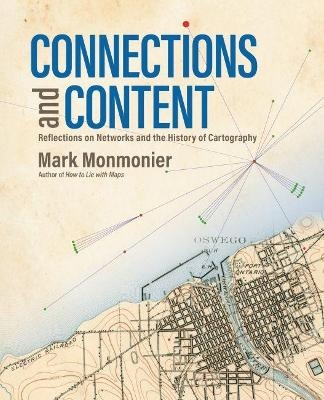
Connections and Content
Reflections on Networks and the History of Cartography
Seiten
2019
Environmental Systems Research Institute Inc.,U.S. (Verlag)
978-1-58948-559-4 (ISBN)
Environmental Systems Research Institute Inc.,U.S. (Verlag)
978-1-58948-559-4 (ISBN)
Cartographic cogitator Mark Monmonier shares his insights about the relationships between networks and maps in a collection of essays.
Behind every great map is a network and behind every great network is a map.
In Connections and Content: Reflections on Networks and the History of Cartography, cartographic cogitator Mark Monmonier shares his insights about the relationships between networks and maps. Using historical maps, he explores:
Triangulation networks that established the baselines to set a map’s scale
Astronomical observations, ellipsoids, geodetic arcs, telegraph networks, and GPS constellations that put latitude and longitude on the map
Cartographic symbols that portray a diverse range of network features
Survey networks used to situate and construct canals, railways, roads, and power lines
Postal and electronic networks that created and disseminated weather maps, and
Topological networks that underlie modern census enumeration and satellite navigation systems.
Connecting the past to the present via maps and reflection, Monmonier continues his contribution to cartographic scholarship by exploring the network's power as a unifying concept for understanding and using maps.
Behind every great map is a network and behind every great network is a map.
In Connections and Content: Reflections on Networks and the History of Cartography, cartographic cogitator Mark Monmonier shares his insights about the relationships between networks and maps. Using historical maps, he explores:
Triangulation networks that established the baselines to set a map’s scale
Astronomical observations, ellipsoids, geodetic arcs, telegraph networks, and GPS constellations that put latitude and longitude on the map
Cartographic symbols that portray a diverse range of network features
Survey networks used to situate and construct canals, railways, roads, and power lines
Postal and electronic networks that created and disseminated weather maps, and
Topological networks that underlie modern census enumeration and satellite navigation systems.
Connecting the past to the present via maps and reflection, Monmonier continues his contribution to cartographic scholarship by exploring the network's power as a unifying concept for understanding and using maps.
Mark Monmonier is Distinguished Professor of Geography at Syracuse University’s Maxwell School of Citizenship and Public Affairs. He is the author of twenty books, including How to Lie with Maps, and was editor of Cartography in the Twentieth Century, the million-word encyclopedia published as volume 6 in the History of Cartography series. His awards include the American Geographical Society’s O. M. Miller Medal (2001), the German Cartographic Society’s Mercator Medal (2009), and induction into URISA’s (Urban and Regional Information Systems Association) GIS Hall of Fame (2016).
Preface
1 Baselines
2 Geometry
3 Symbols
4 Infrastructure
5 Telecommunications
6 Topology
7 Control
List of Acronyms
Index
| Erscheinungsdatum | 02.09.2019 |
|---|---|
| Zusatzinfo | maps |
| Verlagsort | Redlands |
| Sprache | englisch |
| Maße | 190 x 234 mm |
| Themenwelt | Geschichte ► Teilgebiete der Geschichte ► Technikgeschichte |
| Naturwissenschaften ► Geowissenschaften ► Geografie / Kartografie | |
| ISBN-10 | 1-58948-559-9 / 1589485599 |
| ISBN-13 | 978-1-58948-559-4 / 9781589485594 |
| Zustand | Neuware |
| Haben Sie eine Frage zum Produkt? |
Mehr entdecken
aus dem Bereich
aus dem Bereich
Buch | Softcover (2024)
Lehmanns Media (Verlag)
19,95 €
Digitalisierung neu denken für eine gerechte Gesellschaft
Buch | Hardcover (2023)
Quadriga (Verlag)
20,00 €
Vom Perceptron zum Deep Learning
Buch | Softcover (2022)
Springer Vieweg (Verlag)
19,99 €


